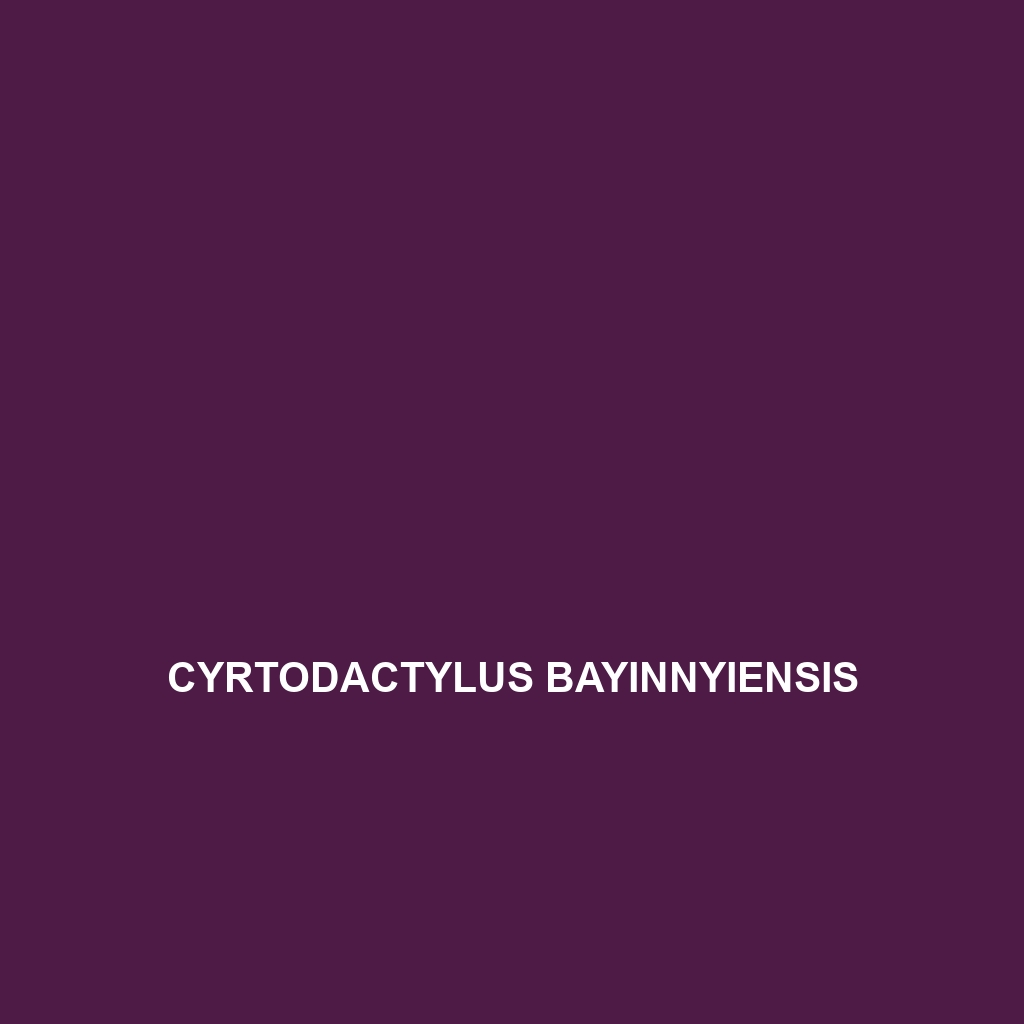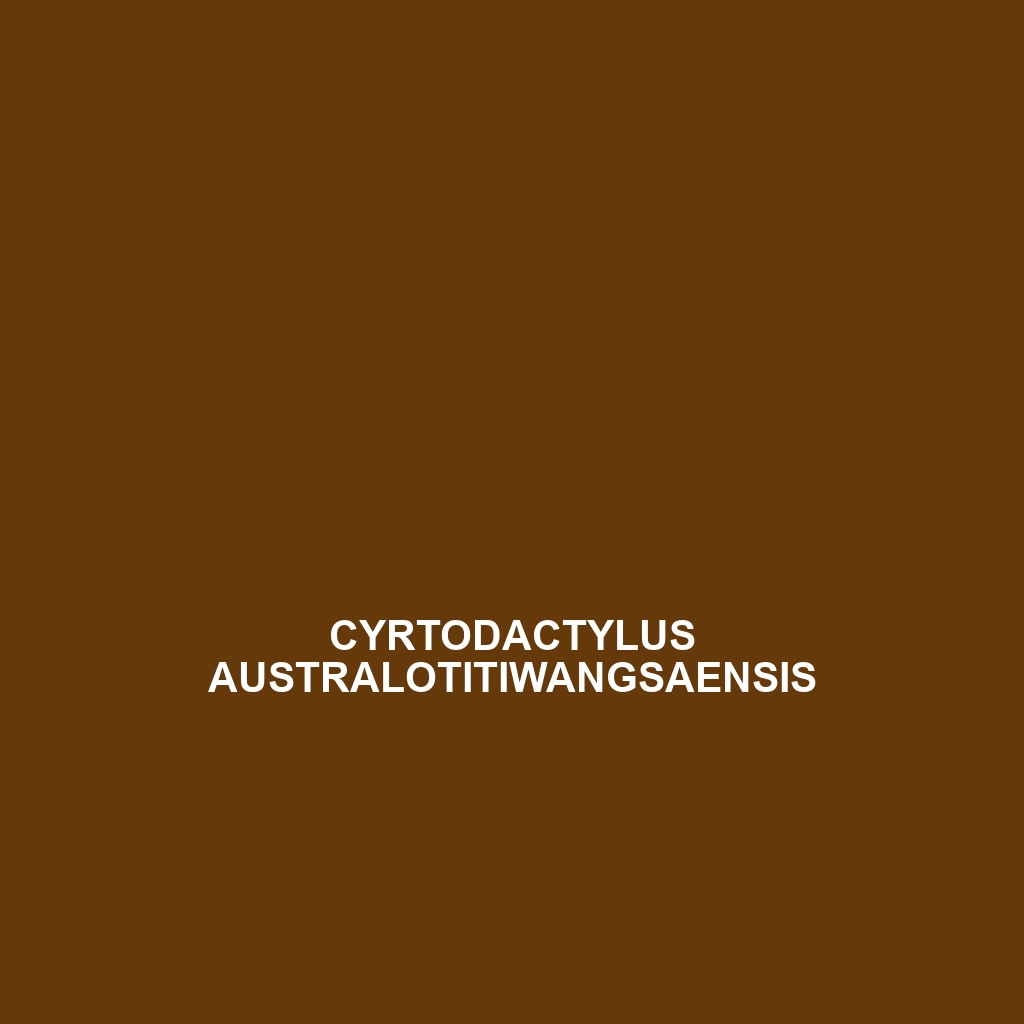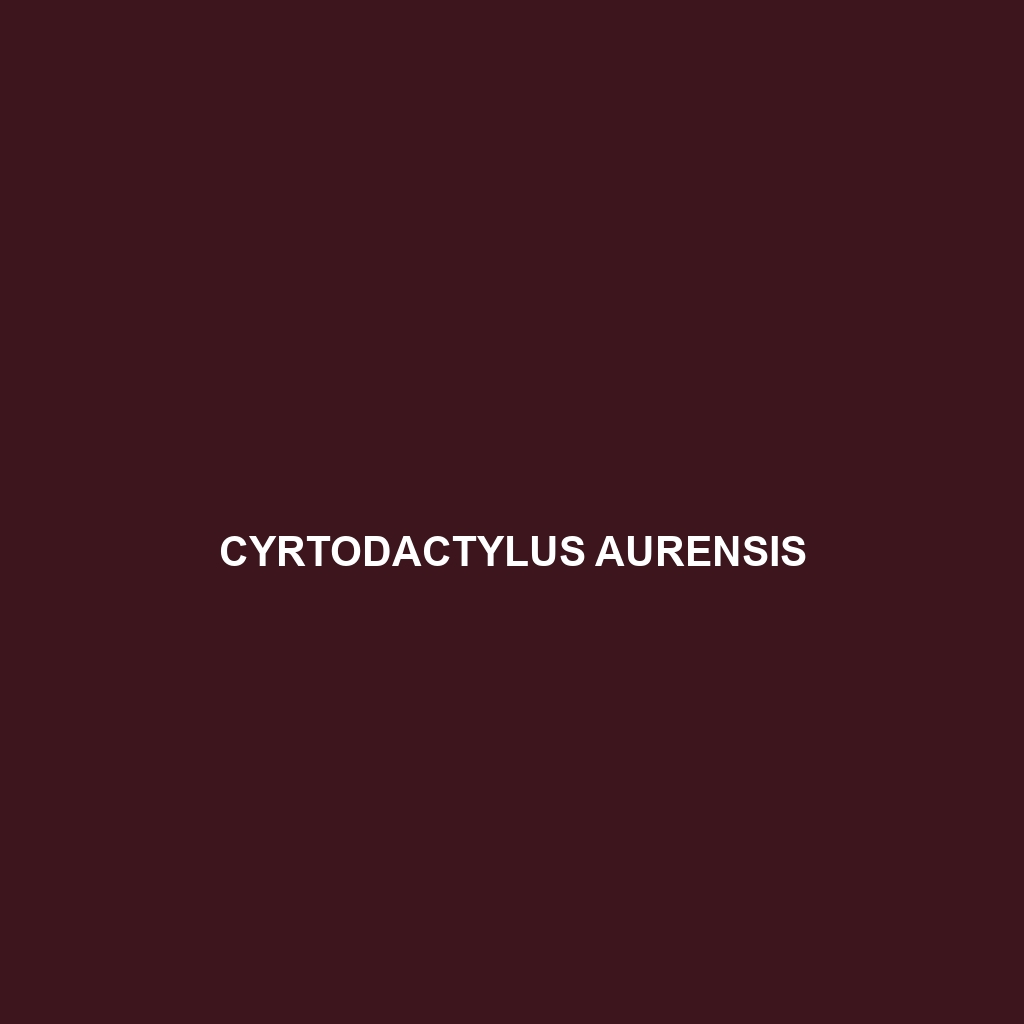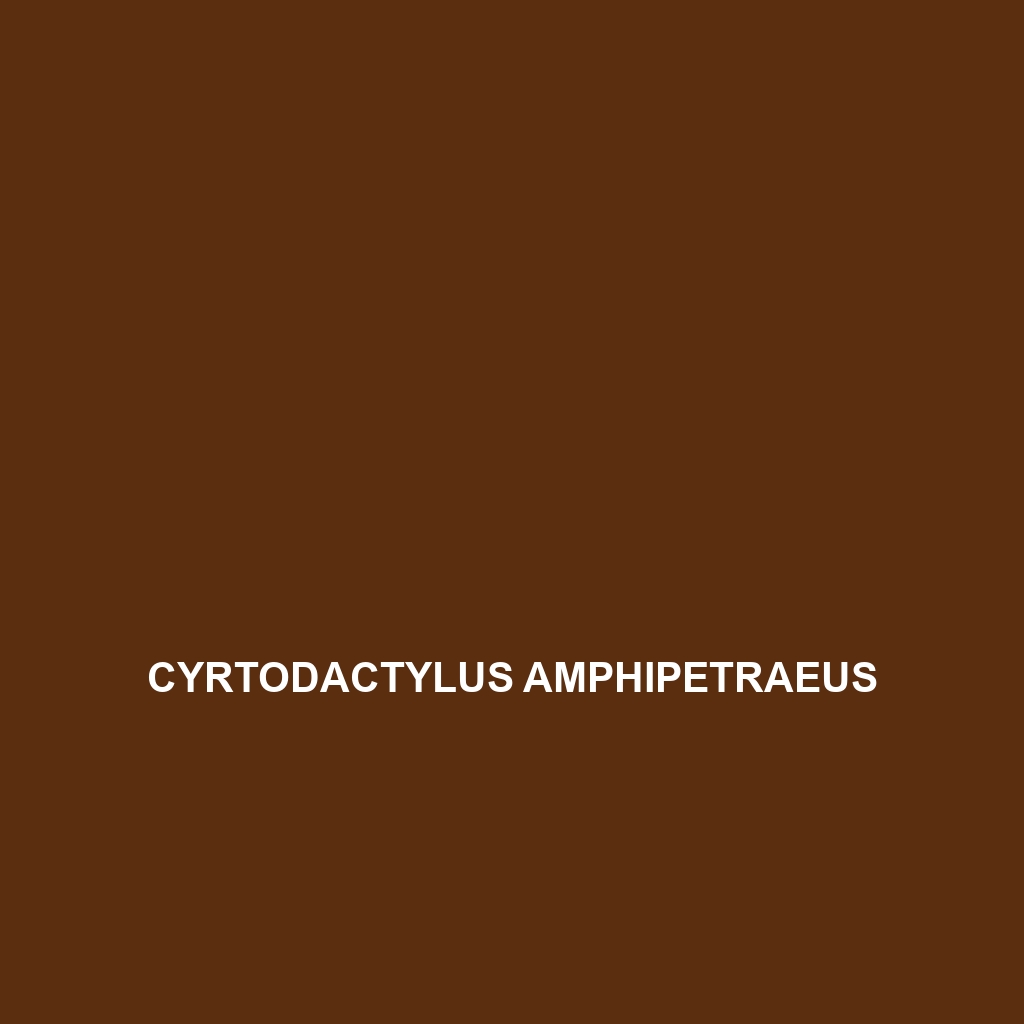Discover the Cyrtodactylus cryptus, a medium-sized gecko thriving in the tropical forests of Southeast Asia, known for its distinctive earthy coloration and nocturnal hunting behavior. This vulnerable species plays a vital role in its ecosystem by controlling insect populations and serving as prey for larger animals.
Tag: Cyrtodactylus species
Cyrtodactylus cardamomensis
Discover the Cyrtodactylus cardamomensis, a small, nocturnal gecko native to the tropical forests of Southeast Asia, known for its striking coloration and agile climbing abilities. With a diet primarily consisting of insects and a vulnerable conservation status, this species plays a crucial role in maintaining the ecological balance of its habitat.
Cyrtodactylus calamei
Cyrtodactylus calamei, commonly known as the Calame's Bent-Toed Gecko, is a nocturnal insectivore found in the limestone karsts of southeastern Asia, exhibiting remarkable climbing abilities and unique coloration for camouflage. Classified as "Vulnerable," this slender gecko plays a vital role in its ecosystem by controlling insect populations and serving as prey for larger animals.
Cyrtodactylus batucolus
Cyrtodactylus batucolus is a vulnerable gecko species native to the tropical forests of Malaysia and Indonesia, characterized by its slender body, distinctive dark brown and yellow markings, and nocturnal behavior. Reaching lengths of 15 to 25 cm, this agile climber plays a crucial role in its ecosystem by controlling insect populations while facing threats from habitat loss.</p>
Cyrtodactylus auribalteatus
Cyrtodactylus auribalteatus, commonly known as the Golden-Brown Flat Gecko, thrives in the humid rainforests of Southeast Asia, characterized by its distinctive golden and brown camouflage, nocturnal behavior, and a diet consisting mainly of small insects. This vulnerable species plays a crucial role in controlling insect populations and maintaining ecological balance in its habitat.</p>
Cyrtodactylus aurensis
The Cyrtodactylus aurensis, or Aurensis gecko, is a vulnerable species native to the humid forests of Southeast Asia, characterized by its slender body, nocturnal behavior, and distinct camouflage. This unique gecko plays a vital role in controlling insect populations while thriving in limestone karst habitats between 200 to 1,000 meters elevation.
Cyrtodactylus auralensis
Discover the Cyrtodactylus auralensis, a medium-sized gecko native to the tropical forests of Southeast Asia, particularly Vietnam. With its distinctive banding patterns and nocturnal behaviors, this Vulnerable species is an agile predator of insects and plays a vital role in maintaining ecological balance.
Cyrtodactylus arndti
<div> Discover Cyrtodactylus arndti, a vulnerable gecko species native to the tropical forests of Southeast Asia, known for its slender body, nocturnal behavior, and diet primarily consisting of insects. With its impressive camouflage and regenerative tail capabilities, this agile climber plays a vital role in maintaining ecological balance.</p>
Cyrtodactylus amphipetraeus
Cyrtodactylus amphipetraeus, commonly found in Southeast Asia’s limestone karsts, is a slender, nocturnal gecko measuring 10 to 15 centimeters in length, with a striking camouflage pattern that aids in its insectivorous hunting habits. Vulnerable due to habitat loss, this species plays a crucial role in maintaining ecosystem balance by regulating insect populations.
Cyrtodactylus aaroni
The Cyrtodactylus aaroni, also known as the Aaron's Bent-Toed Gecko, is a vulnerable species found in tropical Southeast Asian forests, recognized for its brown and olive coloration, nocturnal behavior, and diet consisting mainly of insects. This agile gecko plays a crucial role in its ecosystem by controlling insect populations and serves as both predator and prey.</p>








